
Smart operations-led transformation is revolutionizing the way we run our businesses. With the adoption rate of digital twins skyrocketing, industries are being forced to re-examine their strategies toward applying this technology. Interoperability between the physical and digital world is at the forefront and process integrations are redefining the industrial value chain. However, technology creates complexity and unless we are in a position to understand its effects and deal with uncertainty, we will be unable to leverage its benefits. In this white paper, we discuss the significance of implementing smart operations to automate your business processes, and key challenges that industries face in its adoption. We share some insights, recommendations, and solutions to help organizations become more scalable by “smart management” of OT devices and rollout of the edge-based communication systems. This paper also details how to overcome the barriers of ondemand bandwidth and interoperability of IT and OT systems.
Industry 4.0 promises new-age industrial transformation by marrying operational techniques with digital technology, creating digital industries that are both interconnected and autonomous.
Digital Industries will have an ability to communicate, analyze data and use it to perform intelligent actions within the application or operational systems (physical devices), and reduce manual inspection by applying AI-powered visual inspections.
The physical-digital-physical loop of information flow and the technological concepts of networking, asset management, AI and cognitive technology, nano technology, quantum computing, digital twin, AR/VR, and more, will help transform industries.
It is believed that by 2030, automation will minimize wastage and help achieve global net zero targets sooner rather than later. Figure 1 describes a few high-level factors leading to the Industry 4.0 revolution.
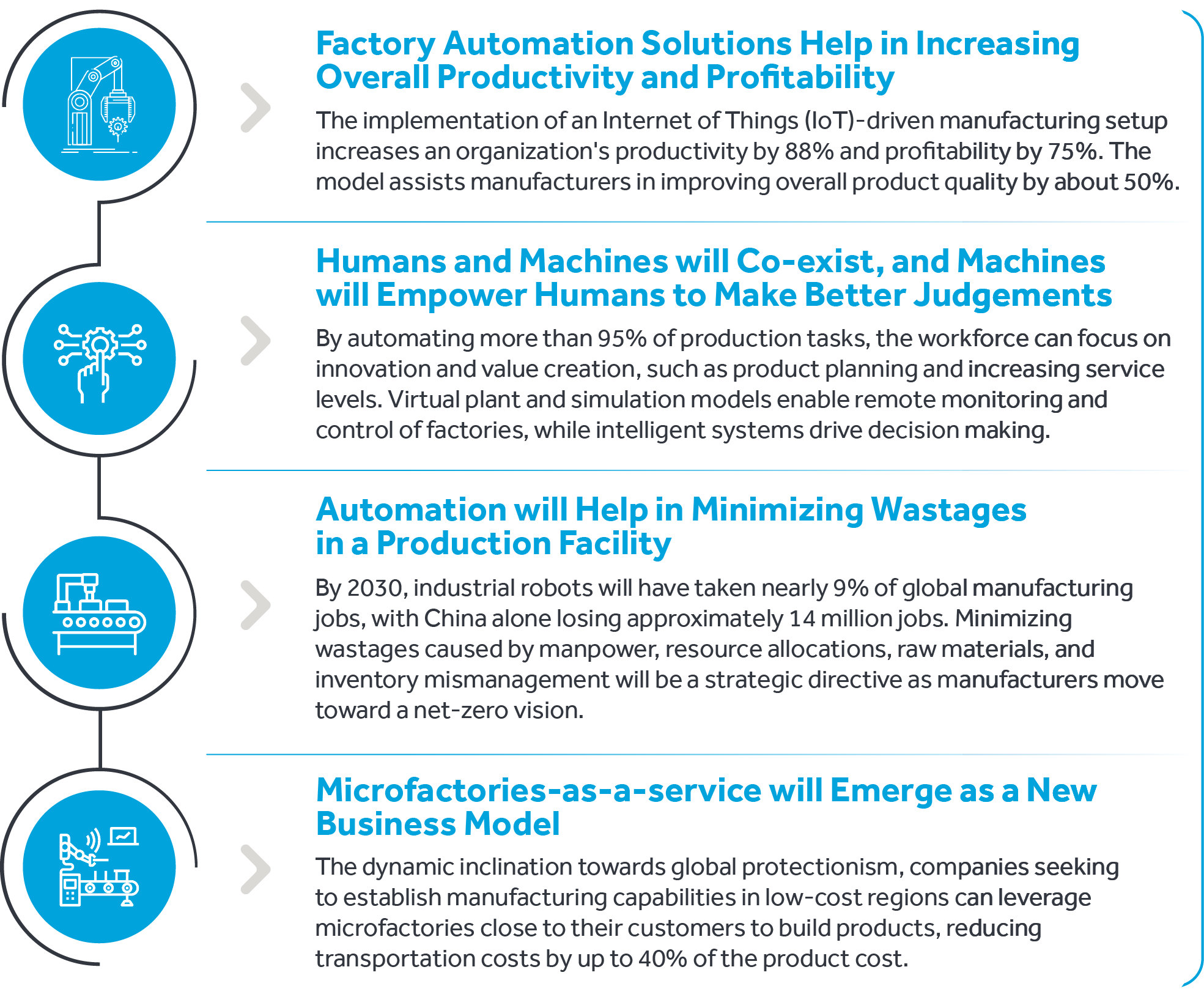
Figure 1. High level view on need for smart operations in Industry 4.0
As seen in Figure 1, the major drivers for modernization and digitalization are improved productivity, co-existence of human and machines, and reduced wastage that will enable global net zero targets and work toward new business models for productivity and profitability.
desired goals. Today, connected networks, AI-driven insight operations, automation, and cognitive assurance can be leveraged to seamlessly provide services. However, industries need to address existing processes, semi- to fully automated equipment, agility to interoperate, data sensitivity, data vulnerability, and ability to sustain the demand and data growth factor.
The concepts and technologies related to Industry 4.0 can be applied to both discrete and process industries such as manufacturing, automotive, mining, oil and gas, pharma, etc. Figure 2 demonstrates the reference model for Industry 4.0. The technological drivers for modernization are IoT (Internet of things), cloud computing, AI and machine learning, edge computing, security, and digital twin, while time-to-market, workforce management, utility efficiencies, and workforce flexibility comprise its operational drivers.
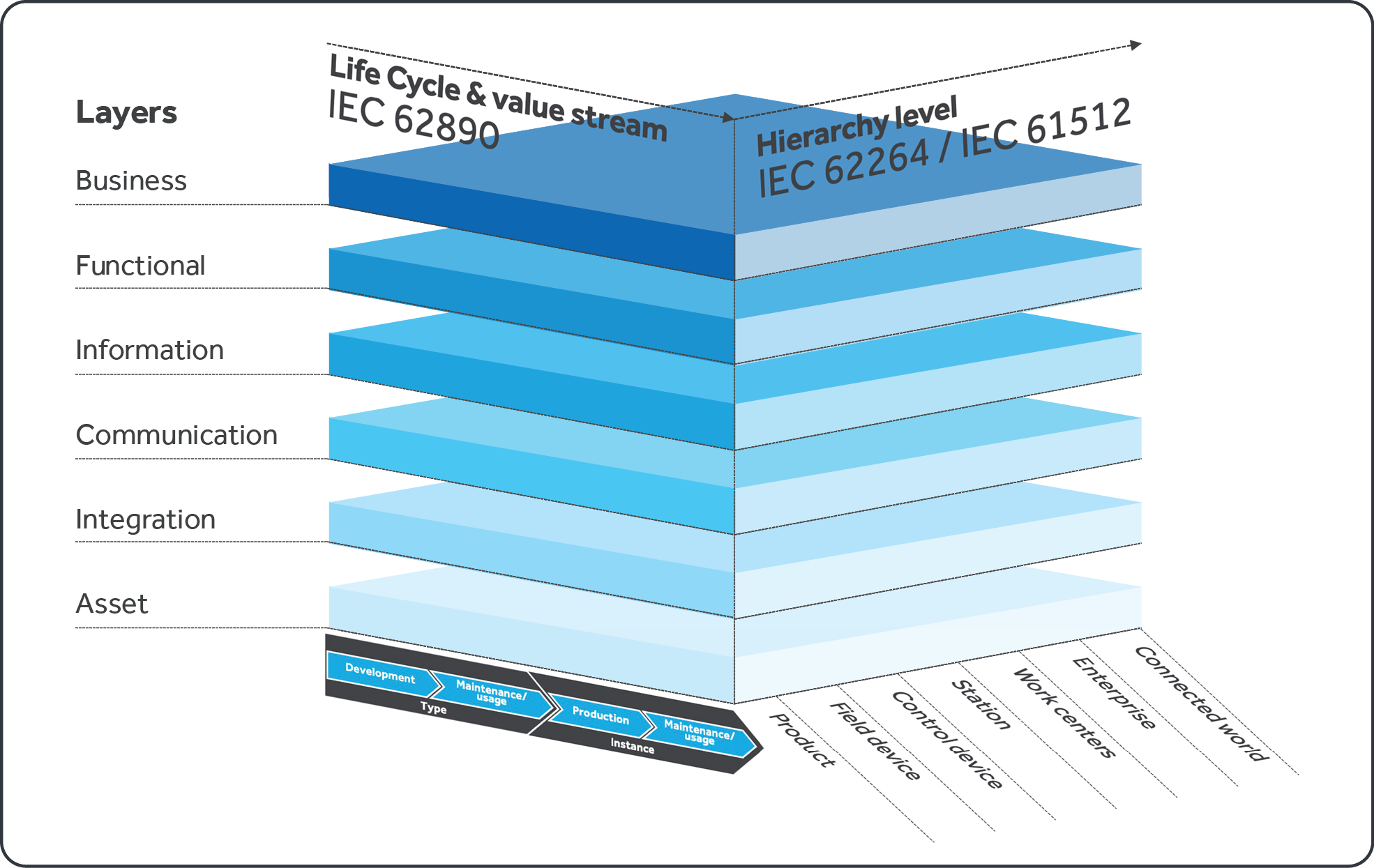
Figure 2. Reference model for Industry 4.0
Figure 2 depicts various architectural layers such as business, functional, information, communication, integration, and asset. These help digitalize functional assignment of product hierarchical level as per IEC 62264 and IEC 61512 in conjunction with various product stages, instances of life cycle and value streams as defined by IEC 62890 in consideration of both the physical and digital worlds related to industries.
Interoperability between the physical and digital world at the field and control device levels is enabled by industrial-grade assets such as sensors and gateways, which can collect information and operate the equipment in a largely automated manner. However, rapidly evolving technology is posing additional challenges in the connected industry space, as discussed below.

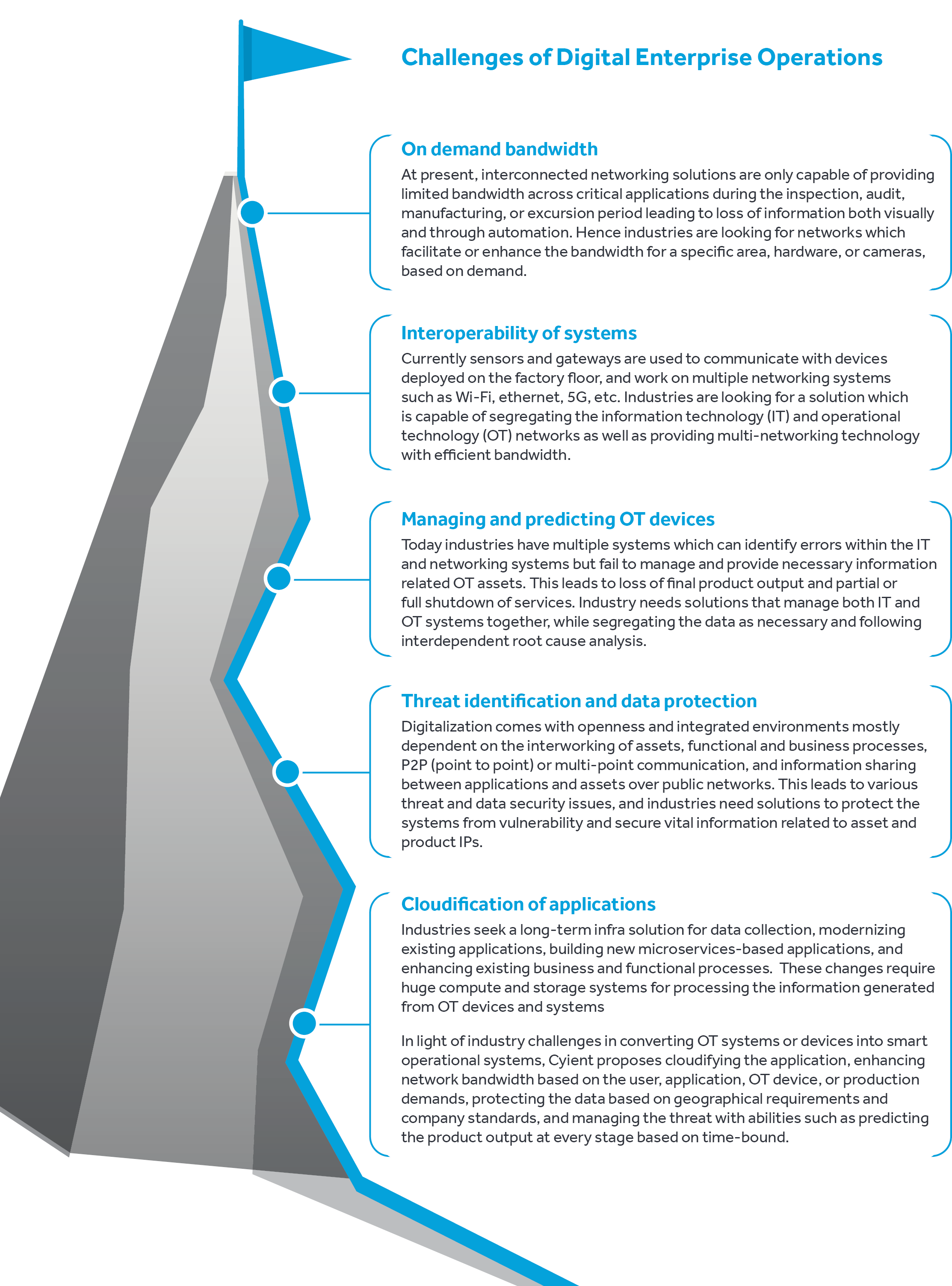
Cyient has decades of experience in helping customers worldwide to research, deploy, integrate, migrate, and support different networks, applications, and technologies.
Industries are currently facing barriers in modernizing their infrastructure, making it Industry 4.0-compliant, and achieving the net zero ESG target. While multiple products are available in the market to help automate and measure device performance on the factory floor, limitations persist in network bandwidth, providing the end-to-end coverage, availability of a single consolidated view of OT network performance, securing data, and predicting issues within OT devices.
As Figure 2 shows, it is important to connect the field and control devices with control stations and work centers. This helps industries manage the asset through digitalization using concepts such as High Accuracy Indoor Positioning (HAIP), inspecting products using AR/VR technology and updating, processing, and managing multi-located industry assets through a central location in real time. It also provides the ability to enhance the bandwidth on demand and manage communication using various protocols while providing necessary coverage across the factory floor, and securing and protecting assets and data.
Cyient recommends a three-tier layered approach (Figure 3) consisting of networking at Layer 1, plugins to gather performance of OT and network devices data consisting of gNB/eNB, edge core, infrastructure, sensor, gateways, PLC, SCADA, application etc. at Layer 2, and various management and operational dashboards consisting of OT and network device performance, topologicalbased RCA (root cause analysis) and devices maintenance status, etc. at Layer 3.
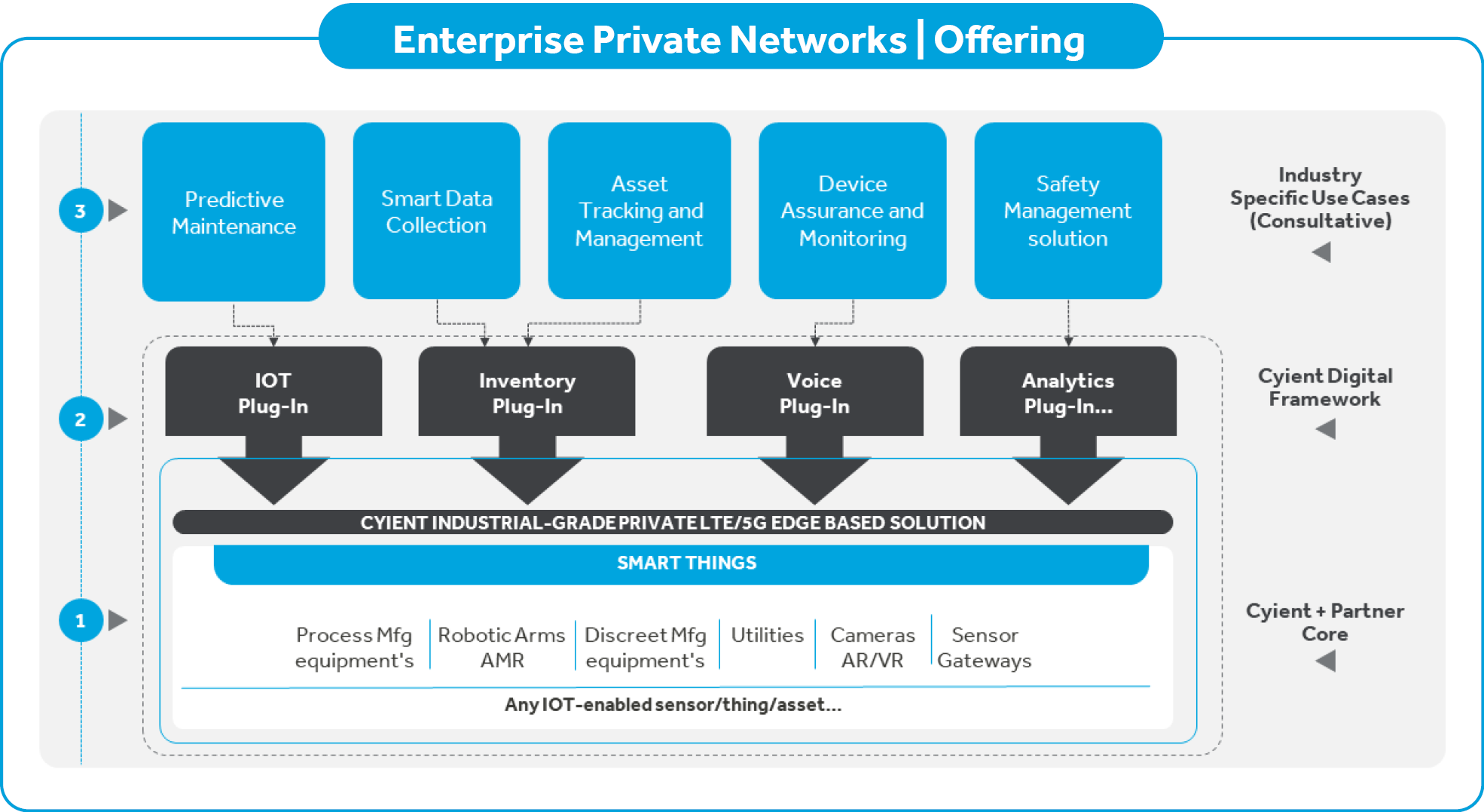
Figure 3. High level end-to-end managed private network architecture
Figure 3 depicts Cyient’s solution for end-toend managed private network architecture for smart operations in Industry 4.0. Layer 1 in the solution demonstrates various sensors and gateways required to gather the data from factory floor and transmit it over the private LTE/5G edge-based solution. This paper further provided more detail on the network solution over-coming the barriers of on demand bandwidth and interoperability of IT and OT systems.
Layer 2 of the solution demonstrates various plugins for extraction of data, while Layer 3 demonstrates various management and operational dashboards consisting of safety management solutions, asset tracking and management, OT and network devices assurance, monitoring and providing the necessary prediction related to quality of the product output based on time taken to build, automated visual identification and quantity of output based on device parameters like vibration, oil level, power consumptions etc.
Cyient recommends building of the rest base API or kafa broker-enabled publisher and subscribe plugins to extract the necessary information related to OT device performance including vibration, oil levels, power consumption stats (watts), throughput of the network devices, product quality output, system performance based on set time, air quality, etc. as per use case requirements. These plugins can also be used to control the machinery deployed on the factory floor by issuing required commands.
The gathered structured or unstructured data is pushed into the database. Cyient further abstracts the data by removing unwanted elements, standardizing the names across the factory floor, enriching the data with the help of the inventory system solution created as part of data collection, creating a topological view consisting of information such as machinery abstract, interconnected sensor, gateways, network devices such as gNB/eNB etc. such that unwanted events are suppressed using topological RCA.
Cyient recommends the use of the AI/ML-based algorithms such as Random Forest, ARIMA, RNN/LSTM, etc., to predict the performance of OT and network devices, and with the help of RPA and automation allocating necessary resources such as enhancing network polices to achieve the desired bandwidth as per service demand, stopping the product build based on the time at each stage, providing the error reference based on the vibration parameters, device display based on HAIP, etc. The combination of topological RCA, performance parameters, RPA, automation, and AI/ML helps in managing and predicting OT device performance along with production output.
While the AI/ML-based algorithms are used to predict the performance of the OT devices and quality and quantity of products along with topology-based RCA, it is also important to manage the OT application through a centralized location. Cyient recommends cloudifying the application by segregating the frontend and backend application logic and informational data for security and cyberattacks.
The instance of the cloudified application can be deployed within the edge platform or application edge platform available on the factory floor to control OT devices. Data can be stored within the data-encrypted storage area within the VM (virtual machine) as part of the application edge platform within local factory locations.
By cloudifying the application, the frontend and backend application logics such as UI/UX interface, business logic, predictive analysis logic, and other necessary product life cycle management such as product version, last updated, operating hours, maintenance window, etc. are available and managed through a centralized location using the public cloud.
When new security or software update patches are available, the instance is pushed via a public cloud on to private edge platform deployed within the industry premises which is accesscontrolled and passes through a secure IPSec or B2B VLAN channel across the stateless firewall. This solves the problem of outdated software, security issues, and data breaches.
The solution of cloudifying the application and configuration of the network based on use cases and requirements makes it easier to manage and handle the OT devices deployed on the factory floor and secure the data. A critical aspect of segregating the overall IT and OT network data flow is enhancing the bandwidth based on demand and converging the IT and OT networks where necessary. Figure 4 provides the detailed networking architecture for Layer 1 depicted in Figure 3.
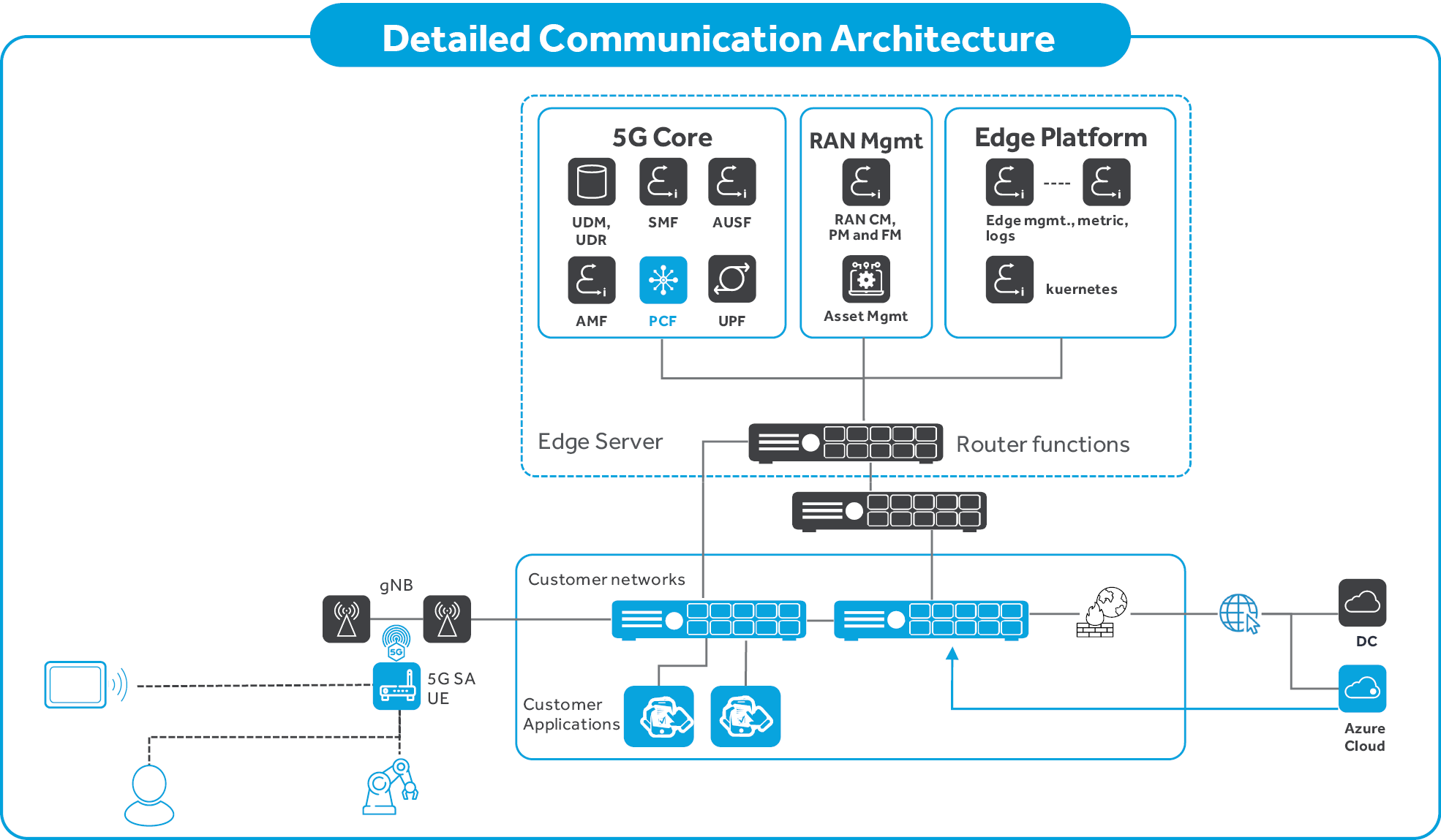
Figure 4. High level network architecture
Current networking technologies such as ethernet, Wi-Fi, etc. have limitations of coverage, speed, and on-demand bandwidth. Also, managing assets through a centralized location on these networks is risky due to exposure of assets to the public cloud making them vulnerable to hacking and data leakage.
Another major issue is that integrated IT and OT networks work on the same infrastructure, leading to a major bottleneck. Cyient’s approach recommends the deployment of the multi-edge computing (MEC) platform enabled with private LTE/5G such that IT and OT network connectivity is disintegrated with an ability to operate the factory-floor devices using digital twin technology and perform end-to-end software life cycle management for all applications and devices within multiple factories from a centralized location.
The edge site consisting of various telco grade elements such as AMF, SMF, AUSF, UDM, PCF and UPF components related to 5G network or VMME, vHSS, vSAE-GE, VGGSN, vIMSCore, SMS-C, WLC, SeGW components related to private LTE is deployed within the industrial data center location. However, the coverage across the industrial floor is provided using the gNB radio devices in case of 5G or eNB radio devices in case of private LTE.
Figure 4 shows that the edge server consists of various core components for providing end-toend network connectivity services across the factory floor and segregating the network based on the use case design, RAN management components for managing the gNB or eNB radio cells, and edge platform for collecting various network and device metrics with an ability to orchestrate the service provided by both network and OT grade devices.
Prior to installation and commission of the edge site and radio cells it is important to understand and gather information related to the type of industries, various manufacturing devices available within the factory, and necessary requirements related to coverage, bandwidth, management of the devices, data privacy, ability of the OT devices to control from a centralized location, and network management capabilities.
Based on the information gathered Cyient recommends carrying out a planning exercise to place the gNB/eNB radio sites, Wi-Fi routers, HAIP devices, and edge sites using the concept of indoor site plan. Post completion of the design site Cyient supports in the deployment and configuration of the site such that coverage and bandwidth is provided across the factory floor as required by the use cases and OT devices’ networking capabilities along with the industry floor radius.
As per the use-case requirement, business needs, type of applications, and ability of OT devices or manufacturing equipment to transmit the data such as vibration, movement, switch the video quality, etc., Cyient recommends the configuration of the core network elements either by slicing different network components or using multiple access point networks (APNs) and service orchestration polices to provide desired services that can handle various protocols. By doing so the necessary IT network segregation and interoperability with OT network is achieved.
While segregation of the network is achieved through the configuration of the core network elements and placement of the gNB/enB site it is important to provide bandwidth based on the demand to perform. Cyient therefore recommends configuration of polices within PCF (policy control function) or PCRF(policy and charging rules function) of the core network such that only during a specified time of day can the equipment on the factory floor be connected to the network and managed from the specific location, criteria-based network speed or bandwidth enhancement is achieved, and live stream of information is transmitted based on the requirement though a manual click
The network is configured so that both IT and OT networks are segregated and on-demand bandwidth is achieved to manage the factory floor more efficiently. Cyient is currently Figure 5. Smart operations sample use cases working with various aerospace, rail, pharma, communications, manufacturing, mining, utilities and energy customers to solve multiple challenges arising due to modernization of applications, devices, and network infrastructure. Figure 5 lists examples of highlevel use cases Cyient has helped build for its customers.
These use cases are related to smart operations for the industries like manufacturing, energy/ utility, automotive/transportation and healthcare industries. They help modernize the industries and operate in smart and efficient ways using digital twin, AR/VR, camera, communication using the 5G/Private LTE, etc. An upcoming whitepaper will elaborate in greater detail on various applications, data collection, and management of OT devices within various industries.
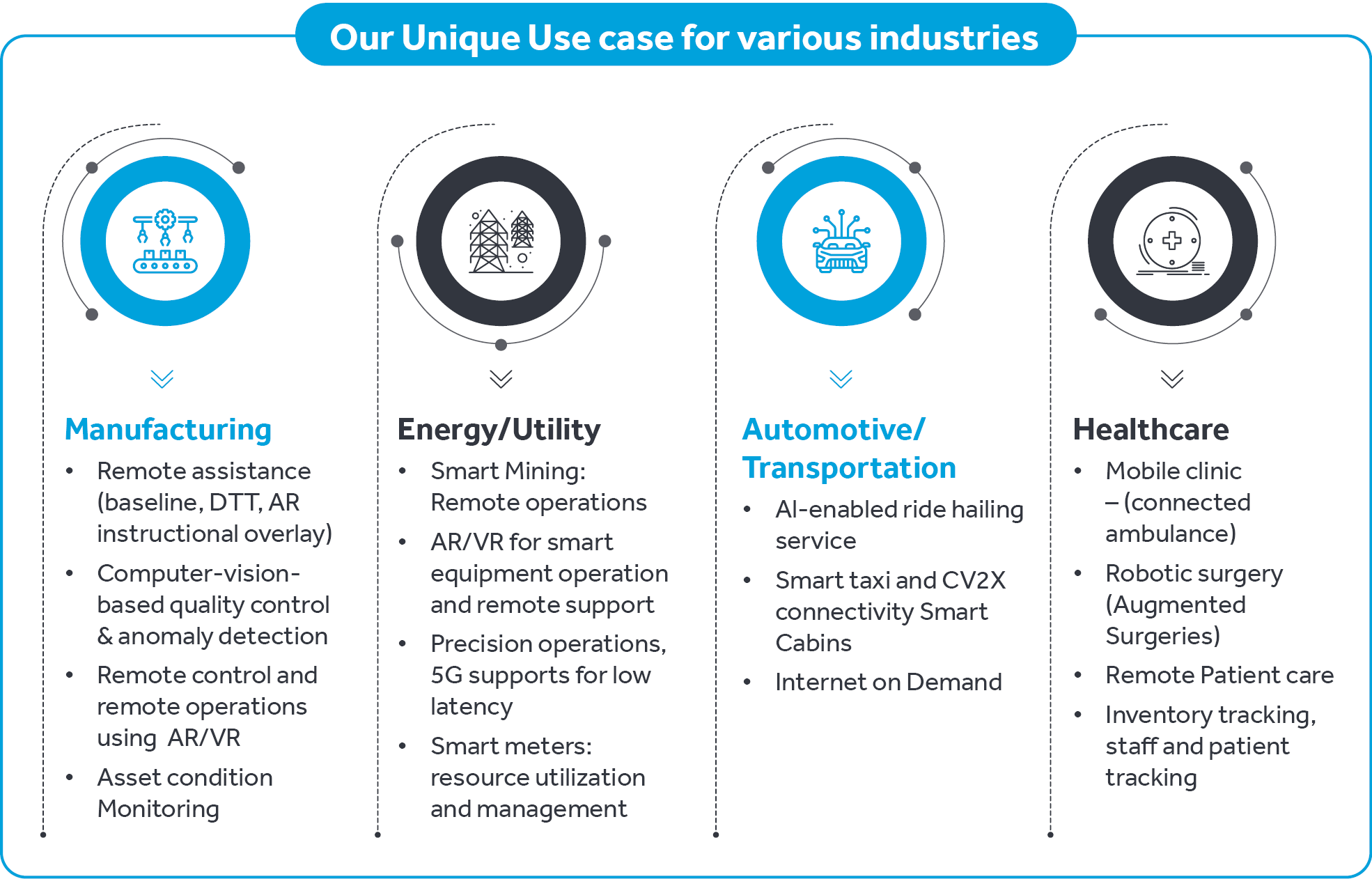
Figure 5. Smart operations sample use cases
It is important to roll out edge-based private network solutions comprising a gNB/eNB, Private LTE/5G core such that IT and OT networks are segregated and OT devices can be managed efficiently. Managing and utilizing the capacity of OT devices can be achieved by predicting issues using AI solution base assurance platforms, on-demand enhancement of network polices to provide necessary bandwidth, cloudifying the applications by segregating the data, frontend, and backend business logics, and enabling the IP-based network using Wi-Fi or ethernet with Private LTE/5G core as a backhaul network. With the help of automation, RPA, and predictive analytics one can smartly mange OT devices deployed within the factory floor via a centralized location, reduce security breaches, increase the production output with desired quality, and reduce hazards.
Cyient (Estd: 1991, NSE: CYIENT) is a leading global engineering and technology solutions company. We are a Design, Build, and Maintain partner for leading organizations worldwide. We leverage digital technologies, advanced analytics capabilities, and our domain knowledge and technical expertise, to solve complex business problems.
We partner with customers to operate as part of their extended team in ways that best suit their organization’s culture and requirements. Our industry focus includes aerospace and defense, healthcare, telecommunications, rail transportation, semiconductor, geospatial, industrial, and energy. We are committed to designing tomorrow together with our stakeholders and being a culturally inclusive, socially responsible, and environmentally sustainable organization.
For more information, please visit www.cyient.com

Ashish Nagar, has an MCA from Osmania University. With over 17+ years of experience in Communications and Security, his areas of interest are building endto-end development, deployment, and operationalization of Network & Network Management stack, including - AI driven solution with an ability to predict the error and provide near real time resolutions.
Cyient (Estd: 1991, NSE: CYIENT)delivers Intelligent Engineering solutions for Digital, Autonomous and Sustainable Future
© Cyient 2024. All Rights Reserved.